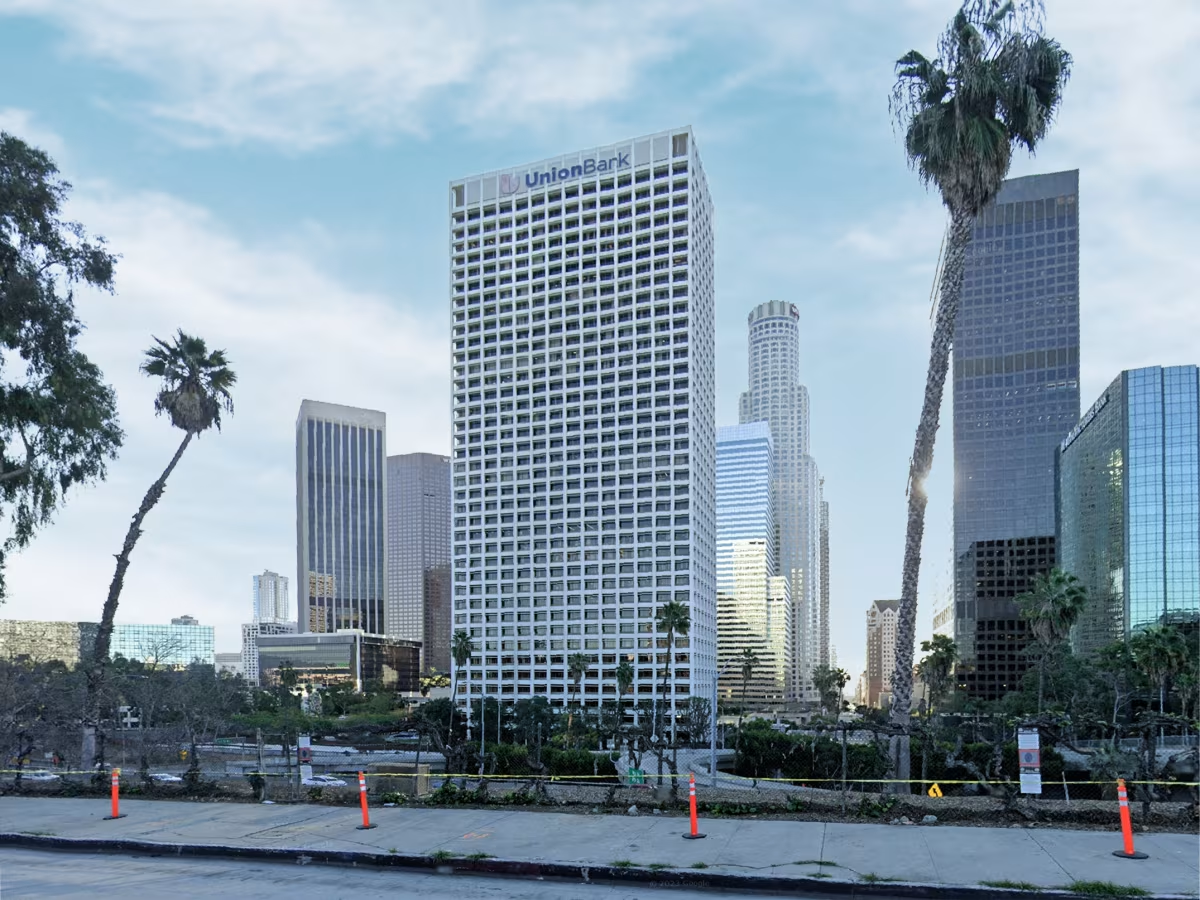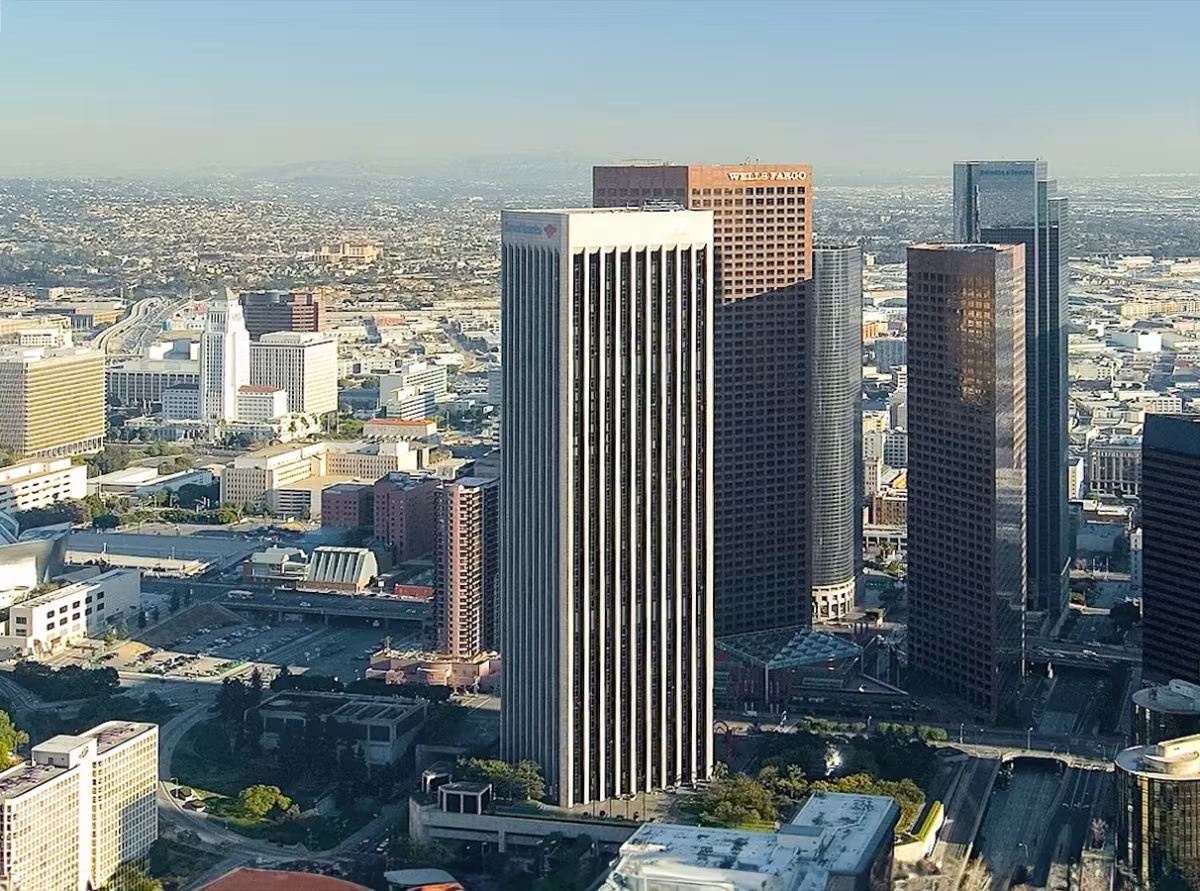Union Bank Plaza Tower vs Bank of America Plaza Building


Comparing the Union Bank Plaza Tower and the Bank of America Plaza Building is interesting because they both rise in Los Angeles, CA, yet they were conceived by two different design teams, Albert C. Martin & Associates and AC Martin & Associates, and were completed at different points in time. They were finished more than 7 years apart.
This contrast within the same city allows us to see how different creative minds interpreted the evolving needs of Los Angeles across time.
Let's take a closer look!
Height & Size
The Bank of America Plaza Building is clearly the larger tower of the two, both in terms of height and number of floors. It rises to 735ft (224m) with 55 floors above ground, while the Union Bank Plaza Tower reaches 515ft (157m) with 40 floors above ground.
Of course, each project may have faced different briefs or regulatory constraints, which we don't really know about and could also explain the outcome.
Architectural Style
Both the Union Bank Plaza Tower and the Bank of America Plaza Building were designed in line with the aesthetic conventions of the International Style style.
The Bank of America Plaza Building was designed at a moment when the International Style style was already in decline, making it more of a lingering expression of the movement. In contrast, the Union Bank Plaza Tower was built when the style still carried greater cultural weight.
Uses
Both the Union Bank Plaza Tower and the Bank of America Plaza Building were designed to serve as commercial towers, and that has remained their main use since their completion, serving similar roles in the urban fabric.
Both towers provide significant parking capacity, with Union Bank Plaza Tower offering 914 spaces and the Bank of America Plaza Building offering 343.
Structure & Facade
Both towers share the same structural solution, a Frame system.
A frame structure uses a grid of columns and beams to carry the building's loads. This frees the walls from structural duties, allowing for flexible floor plans and larger windows.
However, when it comes to the facade, both buildings use different approaches. The Union Bank Plaza Tower uses a Window Wall facade, while the Bank of America Plaza Building uses a Curtain Wall facade.
A Window Wall facade like the one seen in the Union Bank Plaza Tower uses panels fitted between floor slabs, leaving slab edges visible, while a curtain-wall facade like the one seen in the Bank of America Plaza Building uses a lightweight glass curtain wall hung from the structure.
| Union Bank Plaza Tower | Bank of America Plaza Building | |
|---|---|---|
| Albert C. Martin & Associates | Architect | AC Martin & Associates |
| 1965 | Construction Started | 1973 |
| 1968 | Year Completed | 1975 |
| International Style | Architectural Style | International Style |
| Commercial | Current Use | Commercial |
| 40 | Floors Above Ground | 55 |
| 157 m | Height (m) | 224 m |
| 68,525 m² | Usable Area (m²) | 132,081 m² |
| 19 | Number of Elevators | 30 |
| Frame | Structure Type | Frame |
| Steel | Vertical Structure Material | Steel |
| Concrete | Horizontal Structure Material | Concrete |
| Yes | Facade Structural? | Yes |
| Concrete, Glass | Main Facade Material | Granite, Glass |
| Turner Construction | Main Contractor | Turner Construction Company |
| Connecticut General Life Insurance Company | Developer | Brookfield Properties |
| CA | State | CA |
| Los Angeles | City | Los Angeles |
| 445 South Figueroa Street | Address | 301 333 South Hope |